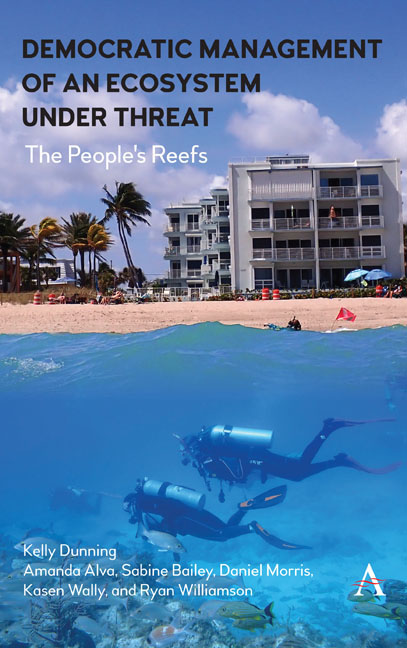Book contents
- Frontmatter
- Contents
- Miscellaneous Frontmatter
- Part 1 The Climate Change Challenge to Coral Reefs That Will Require Conservation Theory And Practice to Evolve
- Part 2 Case Studies
- Part 3 Summary and Conclusions
- Appendix Chapter 5
- Appendix Chapter 6
- Appendix Chapter 7
- Appendix Chapter 8
- Appendix Chapter 9
- Index
Appendix Chapter 9
Published online by Cambridge University Press: 28 February 2024
- Frontmatter
- Contents
- Miscellaneous Frontmatter
- Part 1 The Climate Change Challenge to Coral Reefs That Will Require Conservation Theory And Practice to Evolve
- Part 2 Case Studies
- Part 3 Summary and Conclusions
- Appendix Chapter 5
- Appendix Chapter 6
- Appendix Chapter 7
- Appendix Chapter 8
- Appendix Chapter 9
- Index
Summary
Research Methods
Research design
This case study uses an exploratory sequential research design, where qualitative data is collected first, followed by quantitative analysis to further our understanding of qualitative results (Yin, 2009). The purpose behind exploratory sequential-design studies is that the qualitative findings can inform the quantitative model and in our case become a new theoretical framework for why lawmakers support coral conservation policy (Creswell & Plano Clark, 2018). We used qualitative methods to characterize the messages and themes that political entrepreneurs used to describe their rationale for supporting bipartisan coral reef conservation bills. Quantitative analysis of these statements examines (1) whether there were significant differences between Republicans and Democrats over the ways they framed the problem; and (2) whether support for these bills (i.e., co-sponsorship and “yea” roll-call votes) could be predicted by representatives’ jurisdictions being located in coastal zones and/or adjacent to coral reefs. Roll-call votes occur when a representative or senator votes “yea” or “nay,” so that the names of members voting on each side are recorded, compared to voice votes which do not record the stance taken by individual members (U.S. Senate, 2021). Thus, the qualitative findings (how lawmakers defined the problem) informs the quantitative analysis (differences in message content across political parties and spatial/political party variables of interest). We added the spatial variables after recognizing that a compelling alternative explanation for support for coral reef legislation may come from the fact that congressional political entrepreneurs may live next to and therefore care more about coral reef ecosystems, regardless of political party or long-term political ideology. Overall, we are theorizing why lawmakers cross party lines to support conservation legislation for climate-vulnerable ecosystems. Understanding this rationale may help enact future bipartisan climate policy.
Qualitative sampling logic
To understand how policy entrepreneurs and political entrepreneurs discussed their rationale for supporting these bills (a process that we conceptualize as “defining the problem in the problem stream”), we collected all statements made on The Restoring Resilient Reefs Act, the Tropical Forest and Coral Reef Conservation Reauthorization Act, and the Offshore Wind for Territories Act. Statements were collected from the Nexis Uni Database, Congressional Record archive on congress .go v, and on the social media platform Twitter for statements made by relevant legislators, NGOs and other members of civil society.
- Type
- Chapter
- Information
- Democratic Management of an Ecosystem Under ThreatThe People's Reefs, pp. 217 - 222Publisher: Anthem PressPrint publication year: 2023

